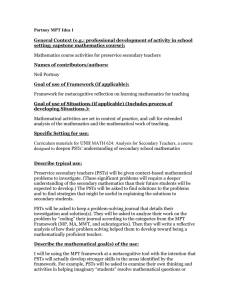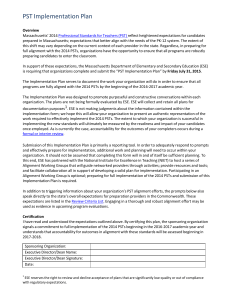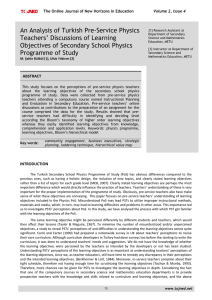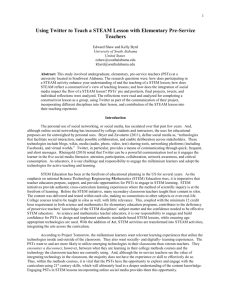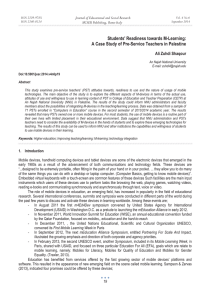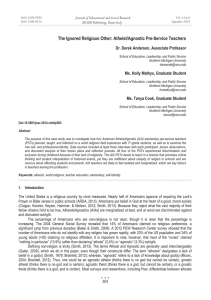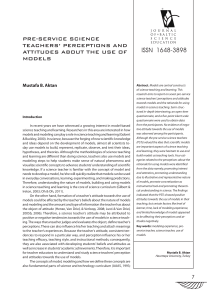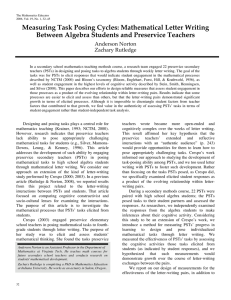SODIUM CHANNEL AMINO ACID SUBSTITUTIONS
advertisement
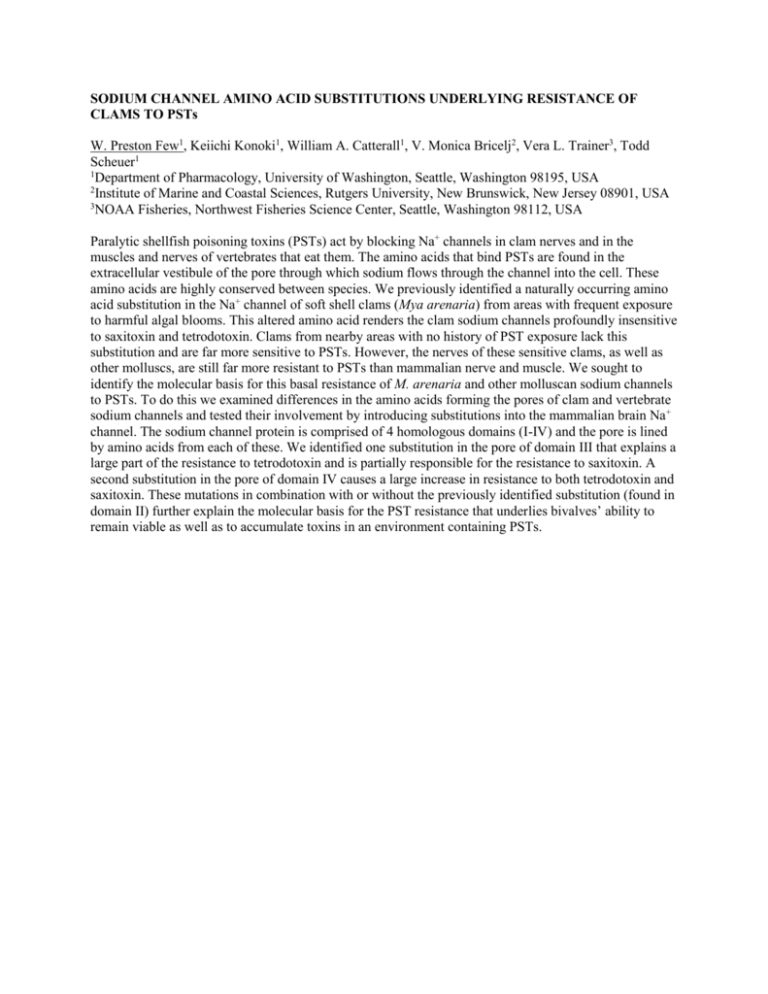
SODIUM CHANNEL AMINO ACID SUBSTITUTIONS UNDERLYING RESISTANCE OF CLAMS TO PSTs W. Preston Few1, Keiichi Konoki1, William A. Catterall1, V. Monica Bricelj2, Vera L. Trainer3, Todd Scheuer1 1 Department of Pharmacology, University of Washington, Seattle, Washington 98195, USA 2 Institute of Marine and Coastal Sciences, Rutgers University, New Brunswick, New Jersey 08901, USA 3 NOAA Fisheries, Northwest Fisheries Science Center, Seattle, Washington 98112, USA Paralytic shellfish poisoning toxins (PSTs) act by blocking Na+ channels in clam nerves and in the muscles and nerves of vertebrates that eat them. The amino acids that bind PSTs are found in the extracellular vestibule of the pore through which sodium flows through the channel into the cell. These amino acids are highly conserved between species. We previously identified a naturally occurring amino acid substitution in the Na+ channel of soft shell clams (Mya arenaria) from areas with frequent exposure to harmful algal blooms. This altered amino acid renders the clam sodium channels profoundly insensitive to saxitoxin and tetrodotoxin. Clams from nearby areas with no history of PST exposure lack this substitution and are far more sensitive to PSTs. However, the nerves of these sensitive clams, as well as other molluscs, are still far more resistant to PSTs than mammalian nerve and muscle. We sought to identify the molecular basis for this basal resistance of M. arenaria and other molluscan sodium channels to PSTs. To do this we examined differences in the amino acids forming the pores of clam and vertebrate sodium channels and tested their involvement by introducing substitutions into the mammalian brain Na+ channel. The sodium channel protein is comprised of 4 homologous domains (I-IV) and the pore is lined by amino acids from each of these. We identified one substitution in the pore of domain III that explains a large part of the resistance to tetrodotoxin and is partially responsible for the resistance to saxitoxin. A second substitution in the pore of domain IV causes a large increase in resistance to both tetrodotoxin and saxitoxin. These mutations in combination with or without the previously identified substitution (found in domain II) further explain the molecular basis for the PST resistance that underlies bivalves’ ability to remain viable as well as to accumulate toxins in an environment containing PSTs.
